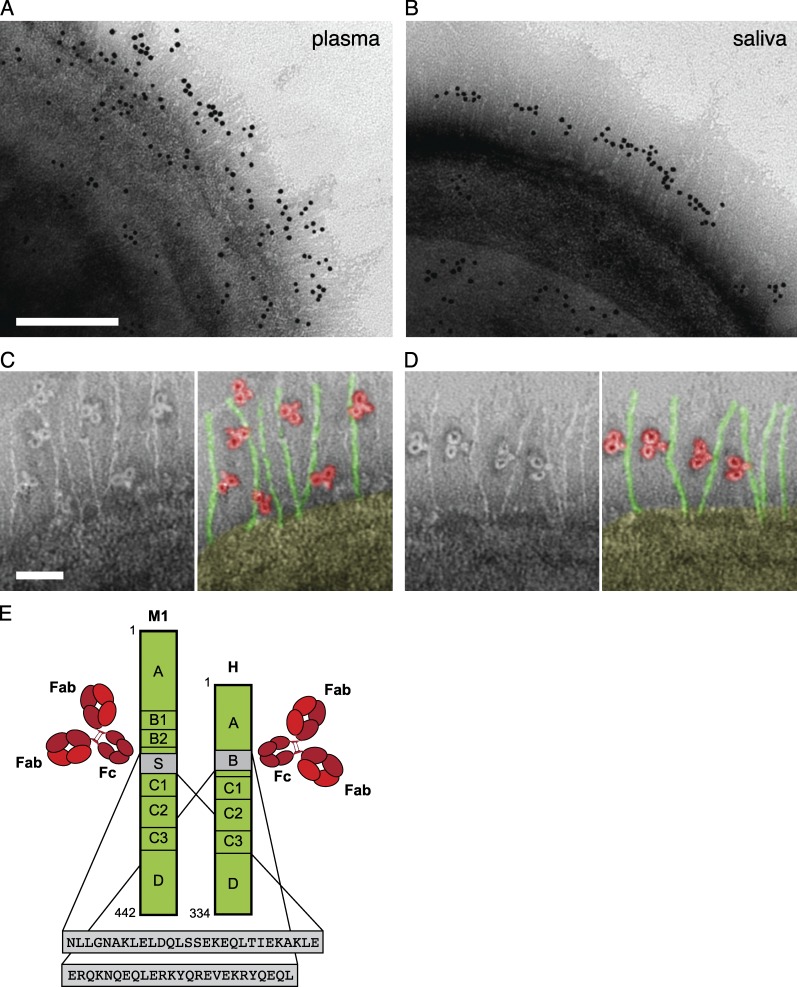Figure 4.
Localization and orientation of IgG at the bacterial surface. (A and B) Negative staining EM was used to visualize the localization and orientation of IgG bound to the bacterial surface. Gold-labeled IgG is found either widely scattered (A, plasma) or in the midsection of the protrusions representing proteins H and M1 (B, saliva) of wild-type S. pyogenes. Bar, 100 nm. Images are representative of two independent experiments. (C and D) High magnification shows single IgG molecules bound either via Fab (c, plasma) or via Fc (d, saliva). Pseudo-color variants are shown to better visualize bound IgG (red) and proteins M and H (green). Bar, 25 nm. 300 bacterial surfaces were analyzed. (E) The wild-type S. pyogenes strain has two surface proteins, M1 protein and protein H, that both bind IgG via the Fc region as indicated in the figure (sequence data adapted from Åkesson et al. [1994] and Frick et al. [1994]).

